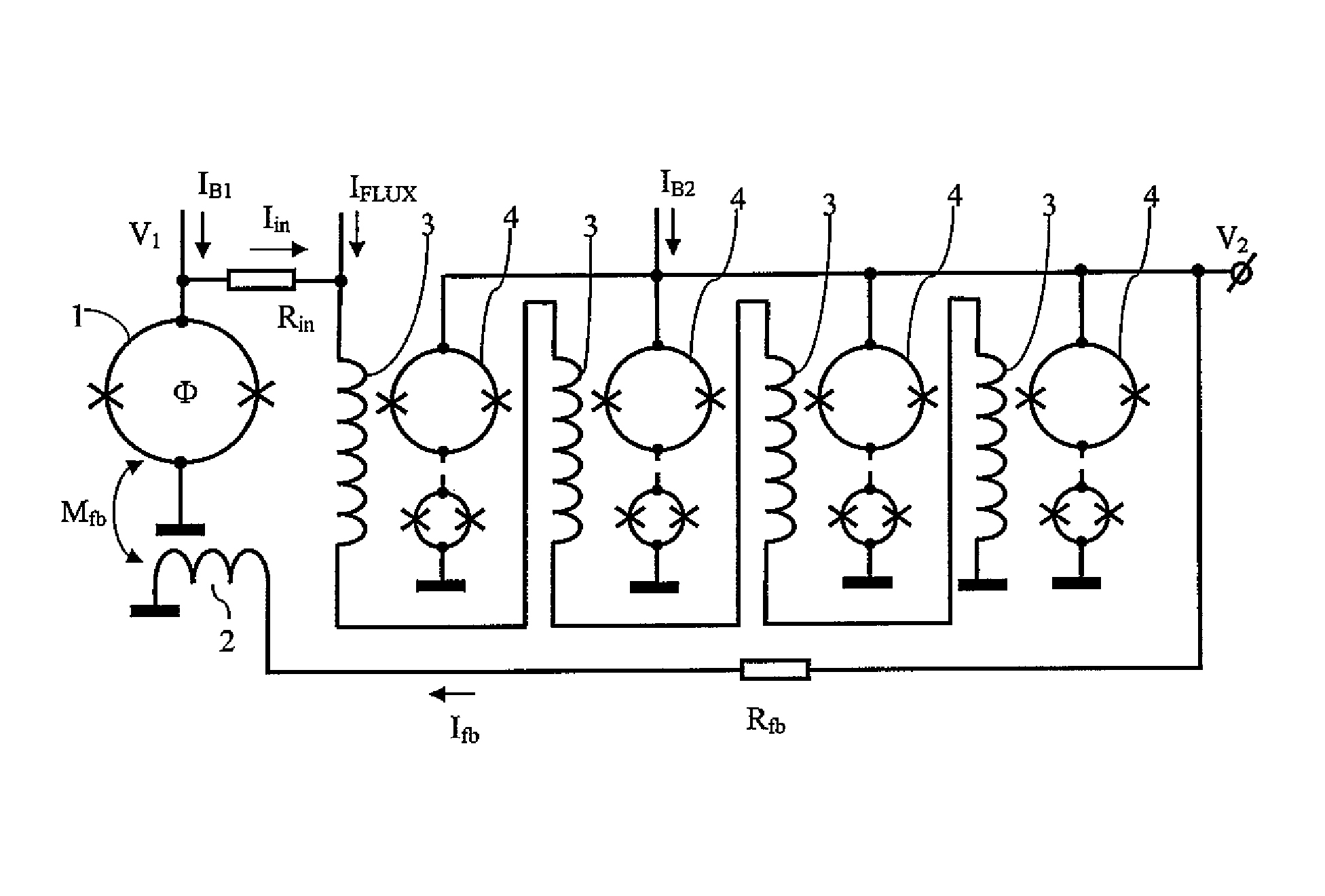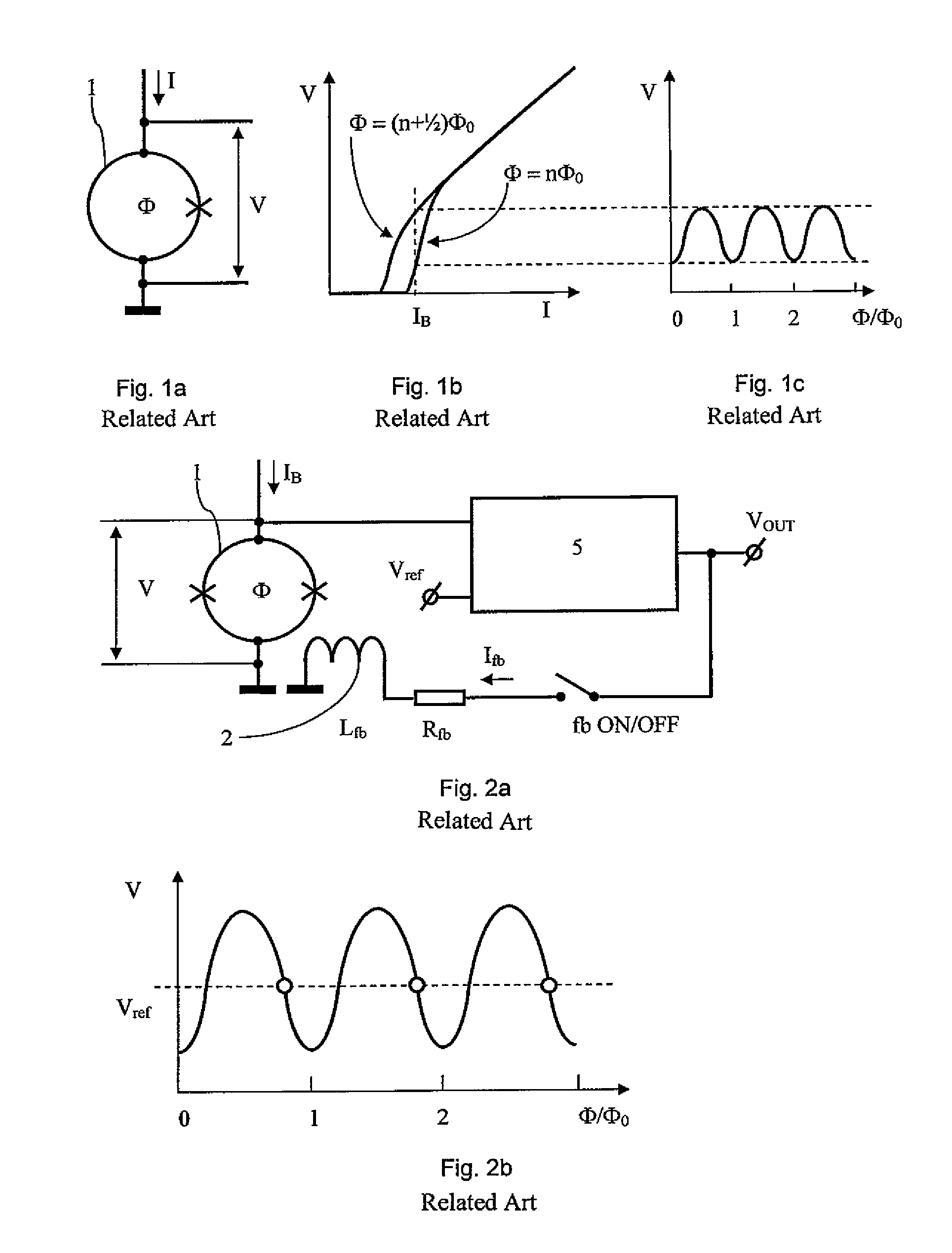SQUID-system having increased flux voltage transfer function
a technology of flux voltage and flux voltage, which is applied in the direction of magnetic measurement, magnetic field measurement using superconductive devices, instruments, etc., can solve the problems of noise limitation of the system, inability to use in many applications, and lack of matching the impedance of the squid to the amplifier input, so as to simplify the required reading of electronics and increase the measuring sensitivity of the system
- Summary
- Abstract
- Description
- Claims
- Application Information
AI Technical Summary
Benefits of technology
Problems solved by technology
Method used
Image
Examples
Embodiment Construction
[0031]To begin with and for better understanding of the invention, the heretofore common way in the prior art for amplifying the signals of a dc SQUID will be outlined by reference to the FIGS. 1 to 4:
[0032]To this end FIG. 1a shows a single dc SQUID 1 and FIG. 1b a current-voltage characteristic (I-V-characteristic) of the dc SQUID at the two extreme values of the flux (Φ) in the SQUID, wherein Φ0 stands for a flux quantum. FIG. 1c shows the respective flux-voltage characteristic (Φ-V-characteristic) of the SQUID when it is provided with an operational current feed IB.
[0033]FIG. 2a shows a dc SQUID 1 having the usual feedback electronics. When the switch fb ON / OFF is shut (“ON” position) the electronics 5 produces a current Ifb which is proportional to the voltage difference V−Vref across the resistor Rfb and the feedback coil Lfb. FIG. 2b shows the corresponding SQUID voltage as a function of the flux in the SQUID. The feedback coupling circuit keeps the entire flux constant in th...
PUM
 Login to View More
Login to View More Abstract
Description
Claims
Application Information
 Login to View More
Login to View More - R&D
- Intellectual Property
- Life Sciences
- Materials
- Tech Scout
- Unparalleled Data Quality
- Higher Quality Content
- 60% Fewer Hallucinations
Browse by: Latest US Patents, China's latest patents, Technical Efficacy Thesaurus, Application Domain, Technology Topic, Popular Technical Reports.
© 2025 PatSnap. All rights reserved.Legal|Privacy policy|Modern Slavery Act Transparency Statement|Sitemap|About US| Contact US: help@patsnap.com



